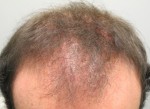Q: What is your opinion of the companies that advertise hair loss solutions like Hims and Keeps?
In searching the web and riding the subway I’ve seen many ads for a company called Hims that offers hair loss medicine and other medical solutions for men’s problems. What are the medications used for hair loss and how do they compare to Propecia and Rogaine? — V.T., Long Island, NY
A: Hims and Keeps are digital wellness companies that are geared toward men. They prescribe the same hair loss products that you can receive from a doctor or from online stores like Amazon, such as minoxidil, finasteride, biotin, salicylic acid shampoos and other topical and oral medications. The patents on the most commonly used prescription medications have expired within the last few years, opening the door for companies to distribute their own generic versions. The online system that Hims uses allows people to get prescriptions without seeing a doctor. Although this might be convenient, receiving an in-person evaluation from an experienced physician is important to ensure that you receive the proper treatment. Medical treatments for hair loss are most effective when started early. Therefore, making sure the diagnosis is correct and that the medications are optimized, will give you the best chance of re-growing your hair and preventing future thinning.

 LPP in Male Pattern Alopecia
LPP in Male Pattern Alopecia Download
Download


